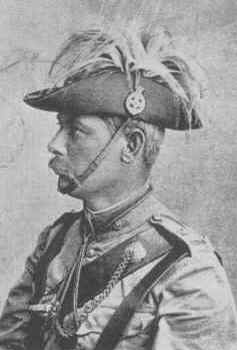 |
|
|||
|
|
||||
|
ELANDS RIVER, SOUTH AFRICA |
Their alternative was destruction by his artillery. The prospects looked grim for the garrison, which had already endured a two-day bombardment of 2500 artillery shells. The 505 defenders had nearly lost all of their 1500 horses, mules and oxen as a result of the shelling, which were strewn around the post and were starting to decay. Facing a Boer commando of 2500-3000, their prospects of rescue were poor.
This place cannot be made very strong as there is little good material for the purpose, the ground being a mass of slaty chips." On the first day of the bombardment the defenders had suffered 32 casualties. That night the defenders worked like beavers. Lacking much-needed digging tools the troopers used whatever they could including their bayonets. All night the men toiled, levering large slabs of slate from the sparse soil so that they might have cover in the morning. Lt Robert Gartside a Victorian officer, wrote: The whole business was quite new and strange to us all, this being our first engagement. I had orders to hold my post with 25 men against all-comers. I asked the men if they were all prepared to stop there in face of all risks. If there was a man who was not prepared to sell his life dearly he could go to another part of the fort. I am proud to say that all said they would stick to me through thick and thin. These men were composed of Victorians and West Australians." Throughout the first week the defenders improved their positions and the Boers did their best to blast away the Australians and Rhodesians. Two separate attempts to relieve the post were made by Gen. Carrington with 1000 men and Col Baden-Powell, founder of the Boy Scouts. Carrington's force got to within 5km of Elands River Post after a sharp fight involving an artillery duel. Carrington withdrew hurriedly to Zeerust. Baden-Powell, who was marching from Rustenburg with a force of 2000 men made up of Bushmen and Rhodesians, withdrew after being misinformed that the garrison had surrendered. Tpr N.P. Gilles, New South Wales Bushmen, who was with Carrington's force wrote: "During the bombardment we were camped at Magato Nek, about 20 miles from Elands River, and from day to day we could hear the boom of the guns from daylight till dark. We only went a few miles to the relief and then turned back, for some unaccountable reason." Gen. Carrington, on reaching Zeerust after his hasty withdrawal, was convinced that the colonials could not hold out for long. He informed Lord Roberts, Commander-in-Chief in South Africa, that the defenders at Elands River had no alternative but to surrender. The Australians and the Rhodesians were on their own with no immediate prospect of relief. The notion of surrender never entered the heads of the Bushmen and the Rhodesians. They were outgunned, outnumbered and completely surrounded; the Boers firing on the defenders' positions from a mere 2400m away. There were many acts of bravery at Elands River Post. Lt J. W. Annat made a name for himself by staying out in an advanced post for hours on end signalling information back on the range of the Boer guns. He led a patrol of Queenslanders against a pom-pom which was troubling the defenders. After crawling through the grass for 200m, the effectiveness of the fire from Annat's patrol forced the Boers to retire without their gun. The weapon could only be retrieved by the Boers after one of them was able to crawl forward and attach a rope to it and man-haul it back. Lt Annat was later killed during the siege when a 12-pounder shell exploded at his feet. His troopers carried his body wrapped in a Union Jack to a location just outside the trenches for burial. The one weakness of the defenders was the water supply from the drift, which was outside of the defences. The Boers brought a number of guns to bear on the kopjes defending the river. After a daylong bombardment the Boers stormed the kopje defended by Capt Butters and 80 New South Welshmen and Rhodesians. The defenders held their fire till the Boers were within 50m of their trenches. Met by a hail of bullets the Boers fell back and regrouped. Once again they tried to take the kopjes, this time by using a Matabele warrior's tactic of advancing behind a flock of sheep and goats. This too failed as the Boers were put to flight by accurate fire from the defenders. As a result of the
assaults and sniper fire from the Boers, the water supply was far from
plentiful. Some of the defenders bravely ran the gauntlet of Boer fire to retrieve water. At night the defenders used the darkness to go looking for Boer field-gun and machinegun positions. With the use of knives and bayonets they silently took the lives of sleeping or conscious Boer sentries. By Capt David Munro |



